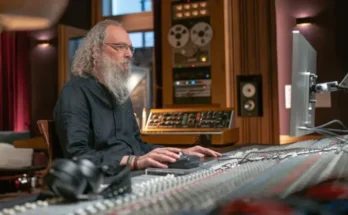Recording Metal Guitars TUTORiAL
21 May 2022 | 7.83 GB
Hello URM!
My name is John Browne and I welcome you to my guitar recording fast track.
A brief history about myself; I am self taught in the field of recording. Everything I do is based on information I’ve collated from others and techniques I’ve discovered from trial/error, and applied over the course of the last 16 years. I don’t consider myself a recording engineer or mixing engineer, initially more of a hobbiest that gets the job done when budgets are tight!
In this Fast Track you will find a huge amount of information on recording guitars with amps, modellers and plugins. I start from the ground up, and then shape them to what I consider a good source guitar sound.
The main point I’ve tried to put across here is to go outside of the box and try different techniques for different projects. Each album you produce will be different and even if you do end up using the same signal chain, mics, and mic positioning between projects, the results will vary greatly between each individual guitar player you’re trying to capture (along with everything else going on in the tracks).
It’s your job as an engineer to capture the essence of each guitar player you work with, and always remember that everyone has a great take in them regardless of their skill. The capturing of this essence is combined across many different factors, but a main one, if not THE main one, is how comfortable the individual is with the tone chosen and how well it is captured at source.
Distorted guitars can be incredibly hard to record well. This Fast Track will help you on that path to capturing that lovely rich white noise that can immediately ruin every mix if you’re source sound isn’t great.
Good Luck!
John Browne
Guitarist – Monuments, Flux Conduct
Please REPORT in Comment Broken Links




